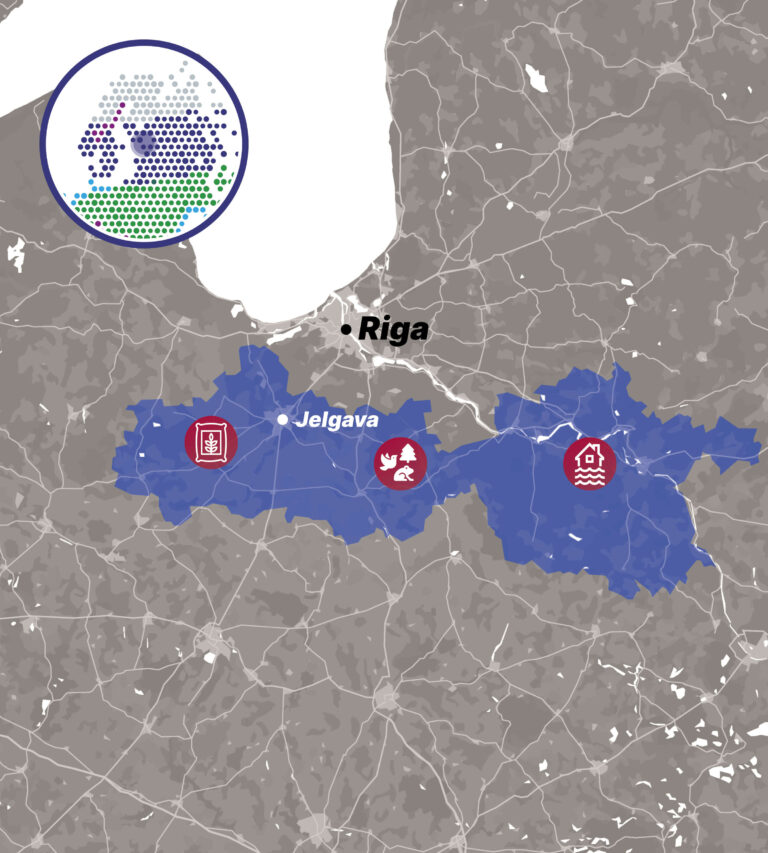Zemgale Region is in the central part of Latvia in central part of the Zemgale Plain. Cities occupy 6% of the total territory of Zemgale Region. Zemgale is crossed by 2 major Latvian rivers: Daugava and Lielupe. Stocks of water resources are sufficient for economic activity and human consumption. The drinking water supply is ensured by a groundwater supply source. Lowland landscape in Zemgale Region is characterized by a flat terrain and a dense river network providing ecological corridors essential for biodiversity and recreational opportunities for people.
At the same time, thanks to its fertile soils, this area has developed into an intensive agriculture land – the large-scale farming covers 40% of the area. This has led to a severe decrease in biodiversity as well as pollution of water bodies, increasing flood risks and other environmental problems. Agricultural activities are well developed and focus on the cultivation of crops.
During the last decade, the area of croplands has increased while meadows and pastures have been reduced putting pressure on grassland habitats. According to the prognosis for development of agriculture sector by 2050, these trends will be maintained and coupled with increased quantity of fertilisers utilised in line with intensification of agriculture which in turn has resulted in homogenisation of fields (continuous arable land fields larger than 30 ha) and biodiversity loss.
The region is characterised by high flooding risk potential including flooding from snowmelts, high precipitation and hydrotechnical infrastructure. In case of flood events, the flooding risks are associated with fast and high rise in water level thus causing risks to society, settlements, and infrastructure. There is a need to assess Zemgale Plain and run an update of the civil protection aspects.



